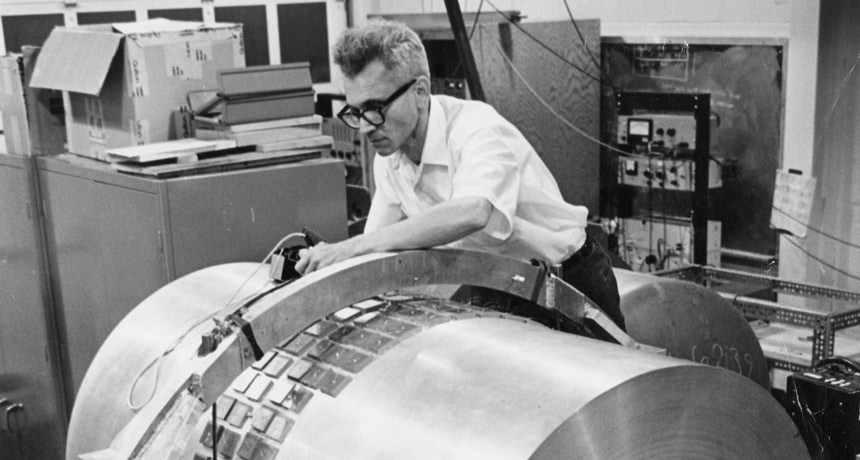In 1968, scientists thought they were close to detecting gravity waves
Excerpt from the June 22, 1968 issue of Science News

WAVE RUNNER Joseph Weber (shown in 1969) announced he detected a gravity wave using his aluminum cylinder detector at University of Maryland in College Park. It took nearly five decades for LIGO to confirm that gravity waves can be detected.
Special collections/Univ. of Maryland Libraries
 Gravity waves evidence
Gravity waves evidence






